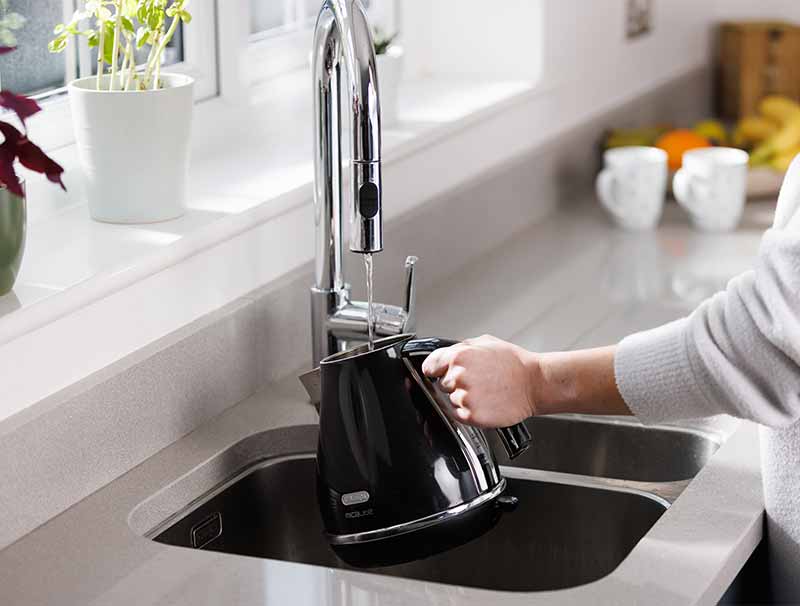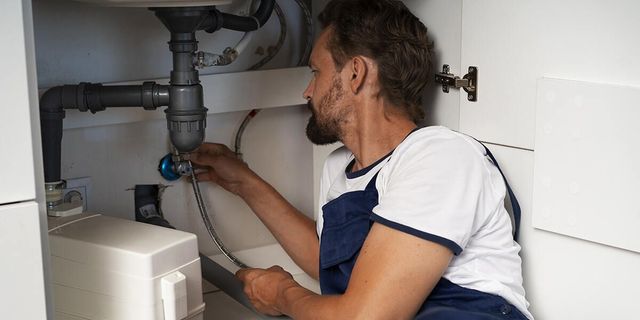Recommended Ways for Addressing Low Water Pressure in Your Home
Recommended Ways for Addressing Low Water Pressure in Your Home
Blog Article
They are making a few good points about Low Water Pressure in the House? overall in the content underneath.

Low water pressure in your home can be a discouraging issue, impacting every little thing from bathing to cleaning recipes. If you're experiencing weak water circulation, there are numerous feasible causes and solutions to discover. In this overview, we'll talk about typical reasons for low tide pressure and practical actions to resolve the concern properly.
Intro to Low Tide Stress
Low tide stress happens when the flow of water from your faucets, showers, and various other components is weaker than typical. This can make day-to-day tasks much more challenging and much less reliable. Comprehending the root causes of low water pressure is important to finding the right remedy.
Typical Reasons For Low Water Stress
Pipeline Obstructions
Gradually, pipes can come to be blocked with mineral deposits, debris, or particles, restricting the flow of water. This is an usual problem in older homes with galvanized steel pipes.
Deterioration
Rust within pipes can cause leaks and decreased water stress. Rust build-up can restrict water flow, particularly in aging plumbing systems.
Faulty Stress Regulatory Authorities
Stress regulators are in charge of preserving regular water pressure in your house. If they malfunction, it can lead to low water stress or irregular circulation throughout your house.
Local Water System Issues
Often, the issue lies outside your home. Community water problems, such as main line leakages or upkeep job, can momentarily minimize water stress in your location.
Exactly How to Diagnose Low Tide Pressure
Checking Taps and Components
Begin by checking the water pressure at various taps and components throughout your home. If the issue is separated to specific locations, it may indicate local problems.
Evaluating Pipes
Evaluate visible pipelines for indicators of leaks, deterioration, or clogs. Focus on any kind of uncommon audios, such as banging or rattling pipes, which could suggest concerns within the plumbing system.
Consulting with a Plumber
If you're unable to pinpoint the reason for low tide stress, take into consideration working with a professional plumber to perform a comprehensive assessment. They can determine underlying concerns and advise ideal remedies.
Do It Yourself Solutions to Repair Low Water Pressure
Cleaning Aerators and Showerheads
Mineral deposits can build up in aerators and showerheads, decreasing water flow. Remove and cleanse these parts regularly to improve water stress.
Flushing Hot Water Heater
Debris accumulation in the water heater can restrict flow and reduce efficiency. Purging the container regularly assists remove debris and keep ideal performance.
Checking Stress Regulator
Guarantee that the stress regulator is functioning correctly. Readjusting or replacing the regulator can aid bring back proper water stress throughout your home.
Clearing Clogs in Pipes
For small blockages, attempt utilizing a plumbing snake or chemical drainpipe cleaner to clear obstructions in pipelines. Be cautious when making use of chemicals and comply with safety standards.
When to Call a Professional Plumber
If do it yourself efforts fail to settle the problem or if you suspect substantial plumbing problems, it's ideal to seek aid from an accredited plumber. They have the proficiency and devices to address complicated issues securely and effectively.
Preventive Measures to Maintain Water Stress
Routine Upkeep
Schedule routine upkeep for your plumbing system to prevent concerns such as corrosion, leakages, and clogs. Resolving minor issues early can aid avoid more substantial repairs later on.
Setting Up a Stress Booster
Consider installing a stress booster pump to boost water stress in areas with regularly reduced circulation. This can be especially useful for multi-story homes or residential or commercial properties with high-demand fixtures.
Tracking Water Use
Be mindful of water use behaviors and avoid overtaxing the plumbing system. Easy modifications, such as astonishing showers and washing lots, can aid keep ample water pressure.
Conclusion
Handling low water pressure can be aggravating, but identifying the underlying causes and implementing appropriate services can bring back optimal flow throughout your home. Whether it's cleaning aerators, evaluating pipelines, or seeking advice from a plumber, taking aggressive actions can make certain a constant supply of water for your day-to-day demands.
How to Fix Low Water Pressure In Your Home
Municipal Water Supply Issues
Scheduled maintenance, high demand, and water main breaks are all potential causes for low water pressure within a city or county’s water lines. While there’s not much you can do to personally fix a problem with your city or county’s water supply system, you can play a big role in documenting the issue and alerting those who can.
How to fix it:
Ask your neighbors if they are experiencing any issues with low water pressure. If multiple homes are affected, it’s likely related to the city’s water line.
Contact the local Water Authority to see if there is any maintenance taking place that might be affecting your supply. Also let them know of your specific issues. If other homeowners report the same issues, they’ll know that there could be a larger issue to look into.
Faulty Fixtures
A damaged or clogged shower head, faucet or appliance is the first thing we’d suggest checking, especially if low water pressure appears to be isolated to a specific area of your home.
How to fix it:
First, turn off the main water supply to your home.
Check the affected appliances for build-up or debris. In the case of a faucet, you can simply unscrew the aerator at the tip of the faucet. Showerheads should be fully detached from the water pipe.
While the appliances are detached, you may want to check the water supply to determine if the fixtures were in fact the issue.
To clean, soak the showerhead or aerator in vinegar and brush off any visible debris.
Reattach the fixtures and check the water pressure again. If it is still low, there is likely a deeper issue at hand, which can be determined by a professional plumber.
Pipe Obstructions
Mineral deposits, rust or other debris within water pipes can lead to blockages or corrosion over time.
How to fix it:
When you think of a clog, you probably think of a drain clog. While there are many DIY solutions to clearing a drain, clogs in a water pipe will almost always require the help of a professional plumber. A plumber will be able to locate the affected pipe and clean out any debris or mineral deposit buildup. In severe cases, the pipe may need to be replaced. Your plumber might also recommend a water softening system to remove the minerals from your home’s water supply that can contribute to pipe blockages over time.
Plumbing Leak
Undetected water line leaks can divert water away from your residential pipes, reducing the water pressure in your fixtures.
How to fix it:
Check your water meter by turning off all water sources and monitoring the meter for any movement, which could be a clear indicator of a potential leak.
Check all visible pipes for signs of leaking, including water stains, active dripping or damp spots around the pipe.
Inspect fixtures, including faucets and showerheads, for any drips.
Test the pressure but recording the pressure with the main water valve shut off. Leave off for a few hours and test again. A significant drop in pressure is a clear sign of a leak.
https://kiddcoplumbing.com/plumbing-blog/how-to-fix-low-water-pressure/

How to Fix Low Water Pressure In Your Home
Municipal Water Supply Issues
Scheduled maintenance, high demand, and water main breaks are all potential causes for low water pressure within a city or county’s water lines. While there’s not much you can do to personally fix a problem with your city or county’s water supply system, you can play a big role in documenting the issue and alerting those who can.
How to fix it:
Faulty Fixtures
A damaged or clogged shower head, faucet or appliance is the first thing we’d suggest checking, especially if low water pressure appears to be isolated to a specific area of your home.
How to fix it:
Pipe Obstructions
Mineral deposits, rust or other debris within water pipes can lead to blockages or corrosion over time.
How to fix it:
When you think of a clog, you probably think of a drain clog. While there are many DIY solutions to clearing a drain, clogs in a water pipe will almost always require the help of a professional plumber. A plumber will be able to locate the affected pipe and clean out any debris or mineral deposit buildup. In severe cases, the pipe may need to be replaced. Your plumber might also recommend a water softening system to remove the minerals from your home’s water supply that can contribute to pipe blockages over time.
Plumbing Leak
Undetected water line leaks can divert water away from your residential pipes, reducing the water pressure in your fixtures.
How to fix it:
https://kiddcoplumbing.com/plumbing-blog/how-to-fix-low-water-pressure/
As a passionate person who reads on 9 Reasons for Low Water Pressure in Your House, I think sharing that information was a great idea. Enjoyed reading our review? Please share it. Let other people locate it. Many thanks for your time invested reading it.
Call Report this page